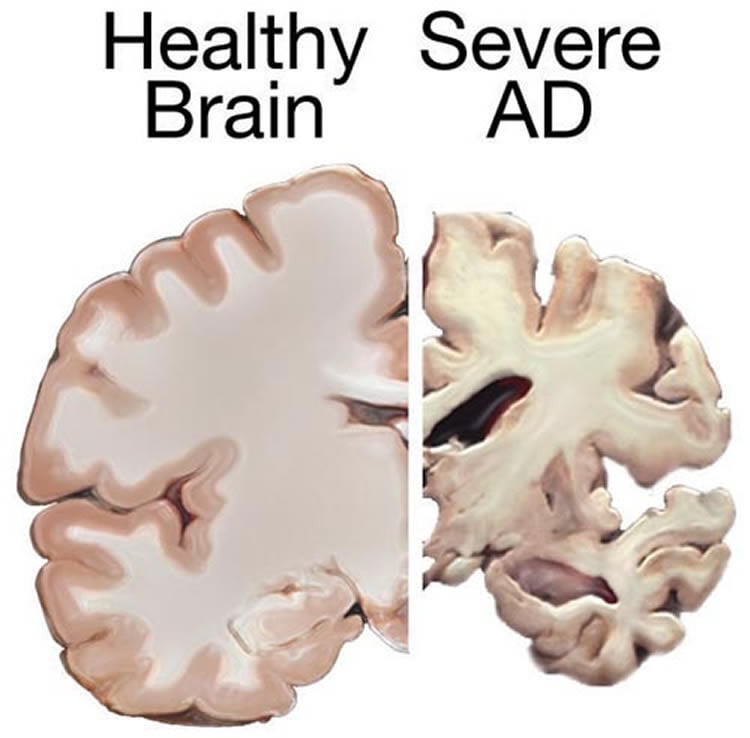Findings may result in new drugs to treat the devastating disease.
For the first time, UCLA researchers have shown that a natural protein fragment produced in the brain can act as an inhibitor of a key enzyme implicated in the onset of Alzheimer’s disease, a finding that could lead to the development of new drugs to treat the disease.
The study found that the protein fragment, sAPPα, inhibits the proteolytic enzyme BACE1. Increased BACE1 activity contributes to production of the amyloid beta aggregates and plaques that are the hallmark of Alzheimer’s.
“Because sAPPα inhibits the BACE1 enzyme, it may be possible that it can be used to help prevent potentially dangerous increases in BACE1 activity, and thus prevent the onset of Alzheimer’s disease,” said senior study author Varghese John associate professor of neurology and principle investigator of the Drug Discovery Lab in the Mary S. Easton Center for Alzheimer’s Disease Research at UCLA.
The findings appear July 28, 2015 in the peer-reviewed Journal of Alzheimer’s Disease.
The protein fragment sAPPis normally produced by neurons and is involved in maintenance of memory. UCLA researchers have shown that this normal brain fragment is also a potent inhibitor of the proteolytic enzyme BACE1. The new finding sheds light on brain regulation of amyloid beta production and could lead to development of new therapeutics.
The need for a new approach to treatment of Alzheimer’s disease is urgent. Alzheimer’s is the most common age-related dementia and the number of cases in the United States is expected to increase from the current number of about five to six million to 15 million by 2050. The costs to family life and on the health care system are enormous. Alzheimer’s and other dementias are projected to cost the United States $226 billion in 2015 alone, with that number rising to as high as $1.1 trillion in 2050.
There currently are no truly effective treatment or prevention strategies for Alzheimer’s, and the available drugs only reduce symptoms temporarily.

John and his team employed a technique called small-angle X-ray scattering, or SAXS, and found that the sAPPα inhibition of BACE1 activity is likely due to the unique, three-dimensional structure of the protein fragment itself. Going forward, John and his team are determining the binding site of sAPP to BACE1 using X-ray crystallography and other techniques.
“Our study suggests that developing sAPPα itself as a biologic, finding a smaller protein or peptide fragment that has similar effects, or identifying a chemical compound that increases levels of this beneficial protein fragment could be new and effective therapeutic strategies for mild cognitive impairment and Alzheimer’s patients,” John said. “These strategies could help normalize brain function and either restore memory and cognitive function, or prevent its decline.”
The protein fragment is critical to normal brain function, and creation of a new class of CNS therapeutics that enhance sAPPα may be of benefit beyond Alzheimer’s. The potential drug could also help those who have suffered stroke or traumatic brain injury. Increasing levels of sAPPα may also be beneficial in treatment of ALS (Lou Gehrig’s disease).
Clare Peters-Libeu from the Buck Institute for Research on Aging is lead author on the study, which was funded by the Joseph Drown Foundation.
Source: Kim Irwin – UCLA
Image Credit: The image is in the public domain
Original Research: Abstract for “sAβPPα is a Potent Endogenous Inhibitor of BACE 1” by Peters-Libeu, Clare; Campagna, Jesus; Mitsumori, Michael; Poksay, Karen; Spilman, Patricia; Sabogal, Alex; Bredesen, Dale E. and John, Varghese in Journal of Alzheimer’s Disease. Published online July 16 2015 doi:10.3233/JAD-150282
Abstract
sAβPPα is a Potent Endogenous Inhibitor of BACE 1
Abstract Proteolytic cleavage of the amyloid-β protein precursor (AβPP) by the enzyme BACE1 (BACE) is the initial step in production of amyloid-β peptide (Aβ), and as such has been a major target of Alzheimer’s disease (AD) drug discovery efforts. Overproduction of Aβ results in neuronal cell death and accumulation of amyloid plaques in AD and in traumatic brain injury, and is also associated with stroke due to cerebral amyloid angiopathy. Herein we report for the first time that sAβPPα, the product of the cleavage of AβPP by α-secretase, is a potent endogenous direct inhibitor of the BACE enzyme, and that its inhibition is likely by an allosteric mechanism. Furthermore, using small-angle X-ray scattering, we show that sAβPPβ, which is identical to sAβPPα except for a 16-amino acid truncation at the carboxy terminus, adopts a completely different structure than sAβPPα and does not inhibit BACE. Our data thus reveal a novel mechanistic role played by sAβPPα in regulating overproduction of Aβ and restoring neuronal homeostasis and neuroprotection. Identification of sAβPPα as a direct BACE inhibitor may lead to design of new therapeutics targeting pathologies associated with overproduction of Aβ.
“sAβPPα is a Potent Endogenous Inhibitor of BACE 1” by Peters-Libeu, Clare; Campagna, Jesus; Mitsumori, Michael; Poksay, Karen; Spilman, Patricia; Sabogal, Alex; Bredesen, Dale E. and John, Varghese in Journal of Alzheimer’s Disease. Published online July 16 2015 doi:10.3233/JAD-150282






